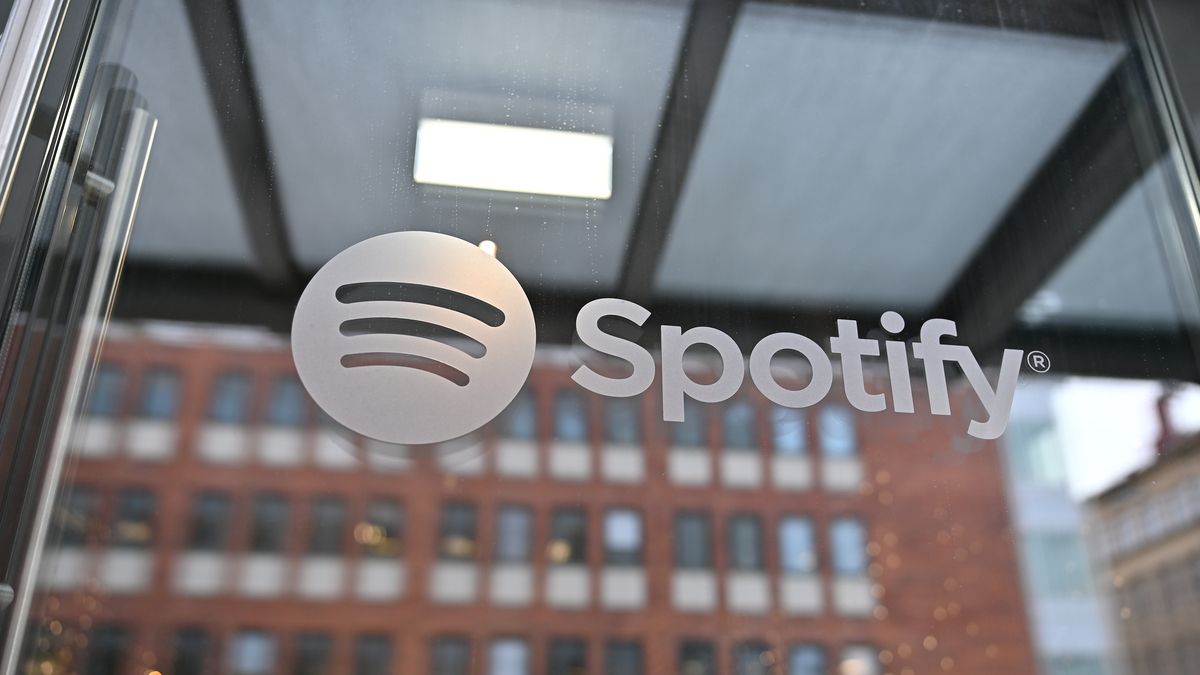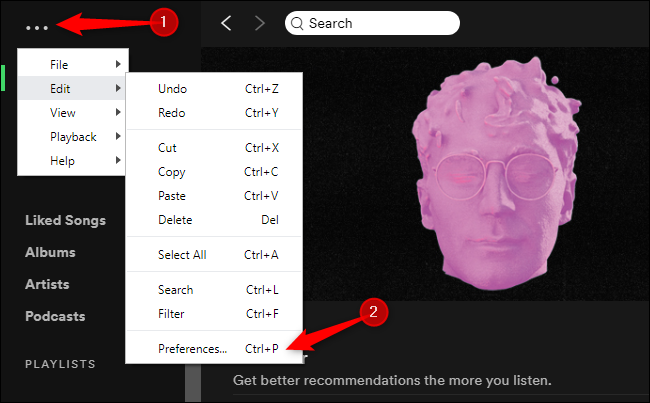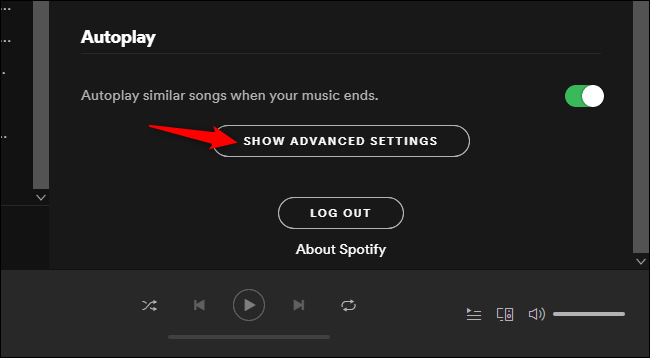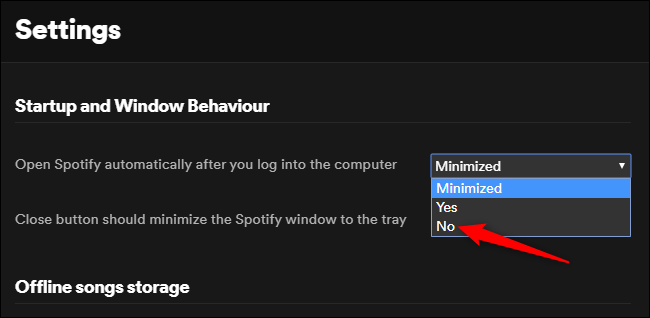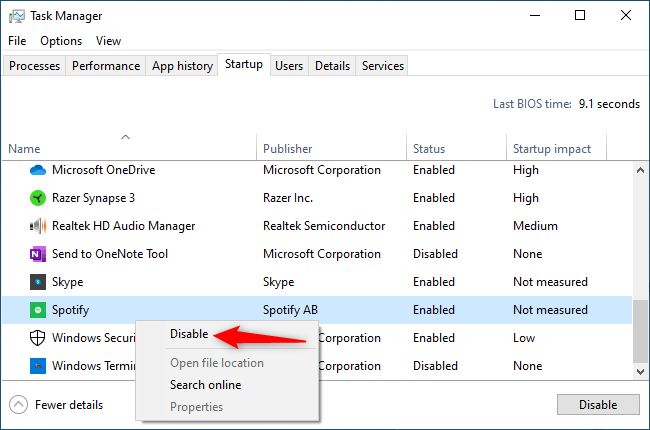Quick Links
By default, Spotify automatically starts every time you sign into your Windows 10 PC. If you don't want it running in the background and slowing down your boot process, you can disable Spotify's autostart feature.
Tell Spotify Not to Start Automatically
To find this option, open the Spotify app. You can launch it from the Start menu or double-click the green Spotify icon in your notification area (system tray) if it's already running.
At the top-left corner of the Spotify window, click menu (...) > Edit > Preferences.
Scroll down to the bottom of the Settings page and click the "Show Advanced Settings" button.'
Look for the "Startup and Window Behavior" option---you may need to scroll up a bit.
To the right of "Open Spotify automatically after you log into the computer," click the dropdown box and select "No."
You can now leave the Settings page. Spotify won't automatically start when you sign in.
Disable Spotify's Startup Task via the Task Manager
If you'd rather not dig through Spotify's settings, you can also cut Spotify's autostart behavior off via the Windows Task Manager. The Task Manager has a built-in Startup tab that lets you control which programs start with your PC.
To launch the Task Manager, press Ctrl+Shift+Esc or right-click the Windows taskbar and select "Task Manager."
Click the "Startup" tab. If you don't see it, click "More Details" at the bottom of the window.
Locate the "Spotify" item in the list. Right-click it and click "Disable."
Spotify's autostart status, as displayed in the "Status" column here, will now be "Disabled." It will no longer launch at boot.
Feel free to disable any other autostart program you want in this same way. Bear in mind that programs won't be able to accomplish their background tasks if you do this---for example, if you disable Microsoft OneDrive on the startup tab, it won't automatically sync your files after you sign in until you launch OneDrive manually.

